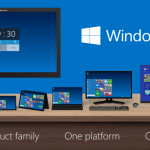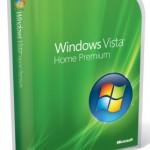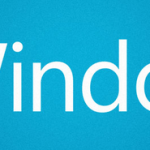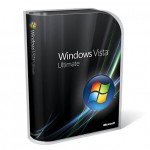Unlike Windows Vista and Windows 7 that come with multiple choices of editions for consumer, Windows 10 actually has limited choice of editions for each class of device, even though
Windows 10 editions look many thanks to Microsoft’s attempt to make Windows 10 the unified name and universal code base for all devices, from tiny IoT (Internet of Things) to large server clusters.
But for typical PC, such as desktop, notebook, laptop, hybrid, convertible, or tablet, the choice of Windows 10 editions is ultimately only Windows 10 Home (Core) edition or Windows 10 Pro if you’re consumer. For small businesses, enterprises and corporations, it’s either Windows 10 Pro or Windows 10 Enterprise. Likewise for educational institution, choice is limited to either Windows 10 Home or Windows 10 Education.
Microsoft has published a comprehensive comparison chart that compares the key differences of Windows 10 editions meant for PC and tablet. These editions, as listed above, are Windows 10 Home, Windows 10 Pro, Windows 10 Enterprise, and Windows 10 Education. All editions have all the common features of Windows 10 as listed as Core Experiences, with only differences in Business Experiences, which packs a lot of enhanced security features.
Note
Some features and functionality of Windows 10 is hardware-dependent, or available to some regions only, or requires separate licenses. For example:
- Fast start up with Hiberboot and InstantGo requires InstantGo or device that passes the device encryption HCK test.
- TPM and BitLocker support requires TPM 1.2 or greater.
- Windows Hello requires specialized hardware, including fingerprint reader, illuminated IR sensor or other biometric sensors.
- Continuum requires touch screen capabilities.
- Cortana is available only in certain markets.
- Device Encryption requires InstantGo or device that passes the “Device Encryption Requirements Test”.
- Azure Active Directory requires separate license.
- Credential Guard and Device Guard requires UEFI 2.3.1 or greater; Virtualization Extensions such as Intel VT-x, AMD-V, and SLAT must be enabled; x64 version of Windows; IOMMU, such as Intel VT-d, AMD-Vi; TPM 2.0; BIOS Lockdown.
| Existing Fundamentals |
Home |
Pro |
Enterprise |
Education |
| Device Encryption |
 |
 |
 |
 |
| Domain Join |
 |
 |
 |
 |
| Group Policy Management |
 |
 |
 |
 |
| Bitlocker |
 |
 |
 |
 |
| Enterprise Mode Internet Explorer (EMIE) |
 |
 |
 |
 |
| Assigned Access 8.1 |
 |
 |
 |
 |
| Remote Desktop |
 |
 |
 |
 |
| Direct Access |
 |
 |
 |
 |
| Windows To Go Creator |
 |
 |
 |
 |
| AppLocker |
 |
 |
 |
 |
| BranchCache |
 |
 |
 |
 |
| Start Screen Control with Group Policy |
 |
 |
 |
 |
| Management and Deployment |
Home |
Pro |
Enterprise |
Education |
| Side-loading of line of business apps |
 |
 |
 |
 |
| Mobile device management |
 |
 |
 |
 |
| Ability to join Azure Active Directory, with single sign-on to cloud-hosted apps |
 |
 |
 |
 |
| Business Store for Windows 10 |
 |
 |
 |
 |
| Granular UX Control |
 |
 |
 |
 |
| Easy Upgrade from Pro to Enterprise Edition |
 |
 |
 |
 |
| Easy Upgrade from Home to Education Edition |
 |
 |
 |
 |
| Security |
Home |
Pro |
Enterprise |
Education |
| Microsoft Passport |
 |
 |
 |
 |
| Enterprise Data Protection |
 |
 |
 |
 |
| Credential Guard |
 |
 |
 |
 |
| Device Guard |
 |
 |
 |
 |
| Delivering Windows as a Service |
Home |
Pro |
Enterprise |
Education |
| Windows Update |
 |
 |
 |
 |
| Windows Update for Business |
 |
 |
 |
 |
| Current Branch for Business |
 |
 |
 |
 |
| Long Term Servicing Branch |
 |
 |
 |
 |
Windows 10 - Important Information







